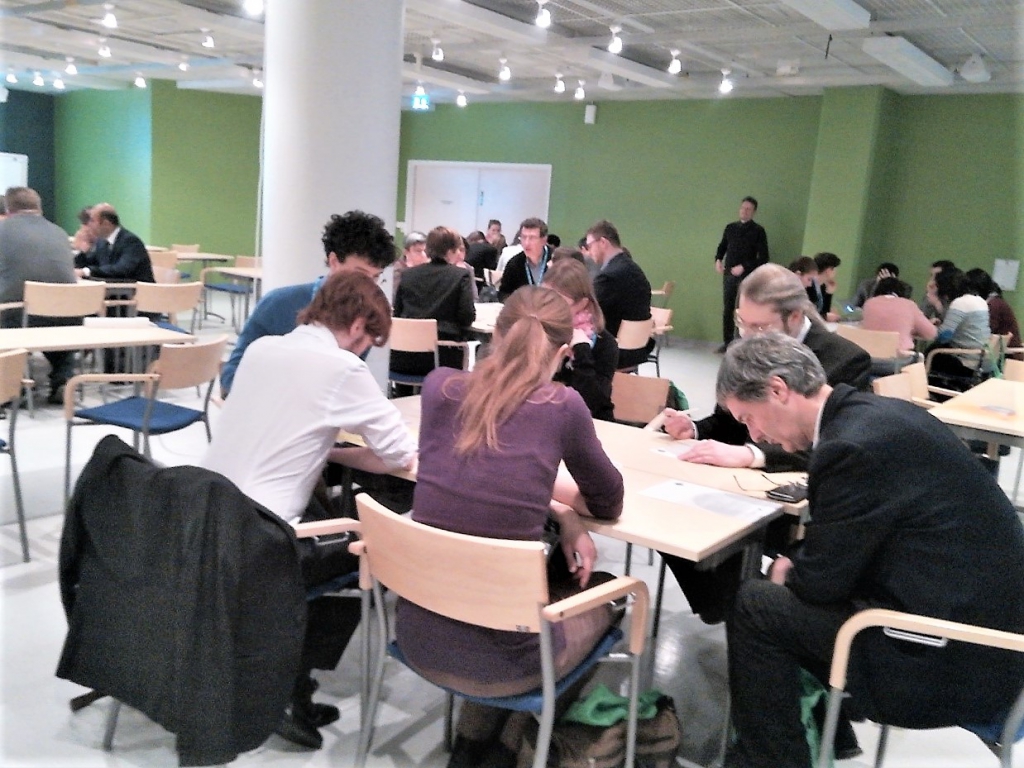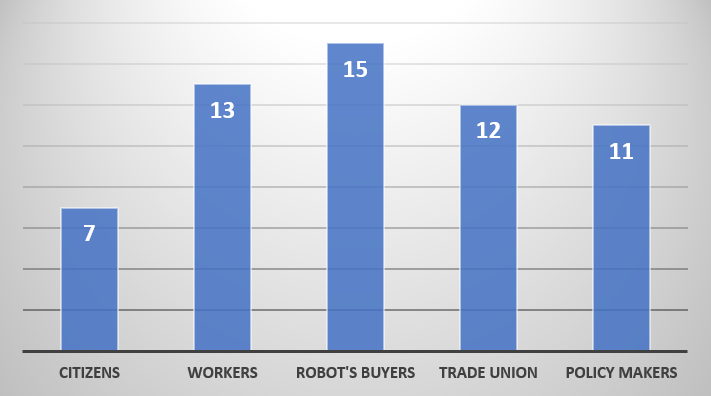bringing together more than 900 roboticists since 2010. We hold a workshop named: “Robot development and design: what about ethical aspects?” as part of the REELER project.
REELER is an EU funded project in the H2020 program with the aim of enabling ethical and responsible robot design. REELER introduces new tools for its goal: Robot Expert Panel (REP) and socio drama to offer invited roboticists a chance to gain new perspectives on their own R&D on robot technology with colleagues, meanwhile mini-publics will involve citizens and policy makers to discuss specific cases to unveil doubts and concerns.
The workshop, after a brief introduction, has seen participants playing a card game, its objective was “designing” a painting robot. Indeed, REELER consortium tackles ethics and societal issues from a multidisciplinary point of view. This strength originates from the wide variety of backgrounds in REELER partners: anthropologists, philosophers, economists and engineers.
The game was divided into two main phases. First of all, teams (participants were divided into groups of 5-6 players) had to choose a sub set of “features” from a list. Features were both technical and societal aspects that may be considered during the robot’s design
Examples are: “The workplace environment has to be adjusted to maximize robot impact”, “Courses and welfare must be put in place to re-qualify workers substituted by the robot” or “The data collected by the robot should be securely processed taking care of privacy issues”. The second phase, divided in three turns, considered the possibility of listening affected stakeholders’ voice by drawing cards. On each table were placed 5 different decks: worker, trade union, citizen, policy make and robot’s buyer; attendees could draw four cards per turn and reflect on their content. On the back of each card there was a statement representing the person’s thought. An important fact is that features and statements were inspired by real cases investigated in REELER. Example of statements are: “If I am replaced by a robot what should I do? What should I do without my job? Without money? I will be bored, and I will start, maybe, gambling and drinking” (worker), “People should be able to intervene in the robot’s activity at all time” (policy maker) and “If robots are going to take our jobs, we should be able to sustain our quality of life, the same level of welfare and wellbeing” (citizen). The team were expected to be able to change their mind (selecting new features) according to cards’ feedbacks.
At the end of the game there was room for participants’ feedback. Since the card game was at its first public appearance the discussion focused on possible improvements and minor refinements for the next matches. Anyway, players appreciated the debate elicited by the game and some of them asked for a possible use in education or inside their company.
Below you can find a graph indicating the cards drawn and the final list of features.
Alex Gimondi
Researcher at Ab.Acus



